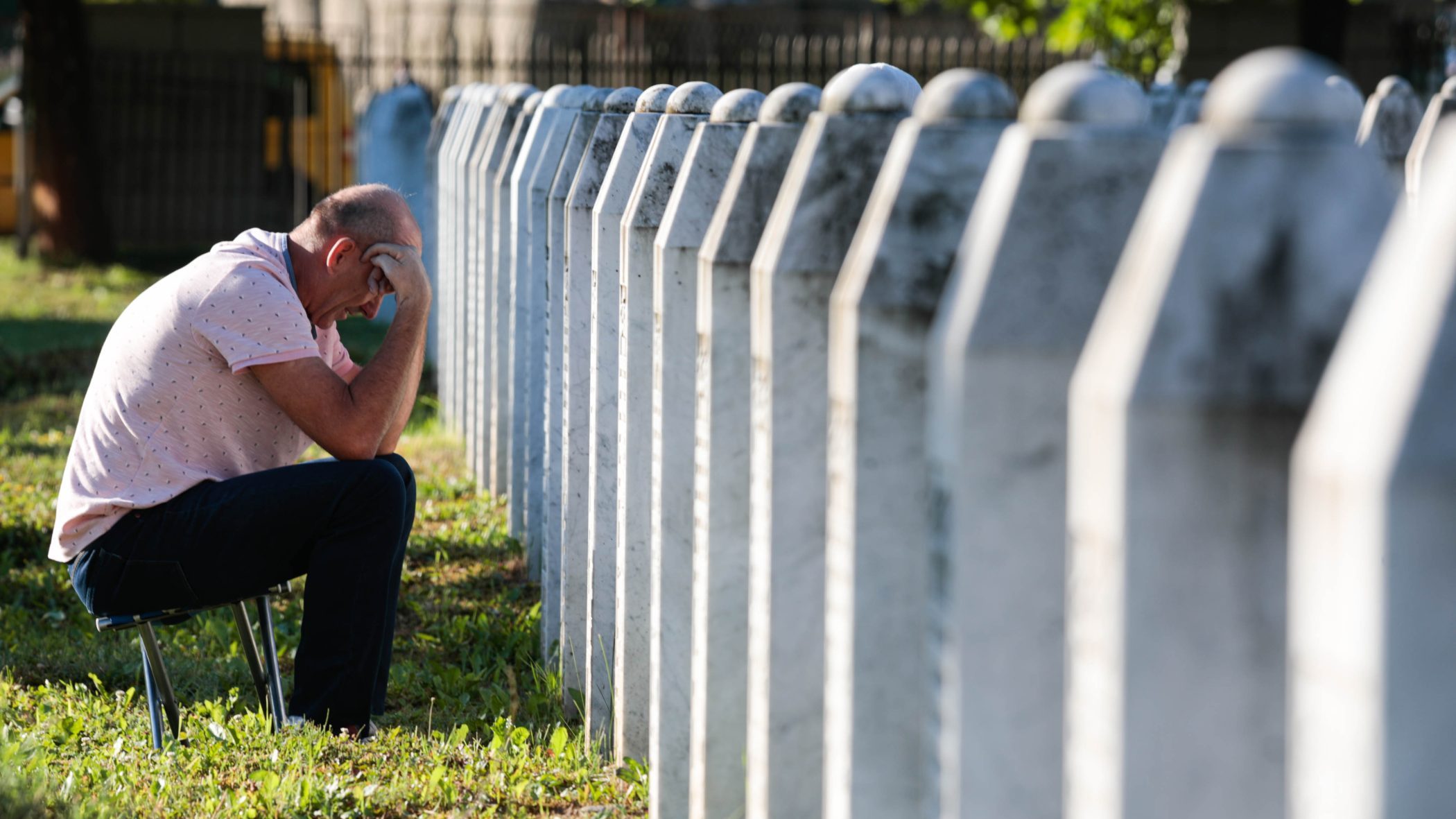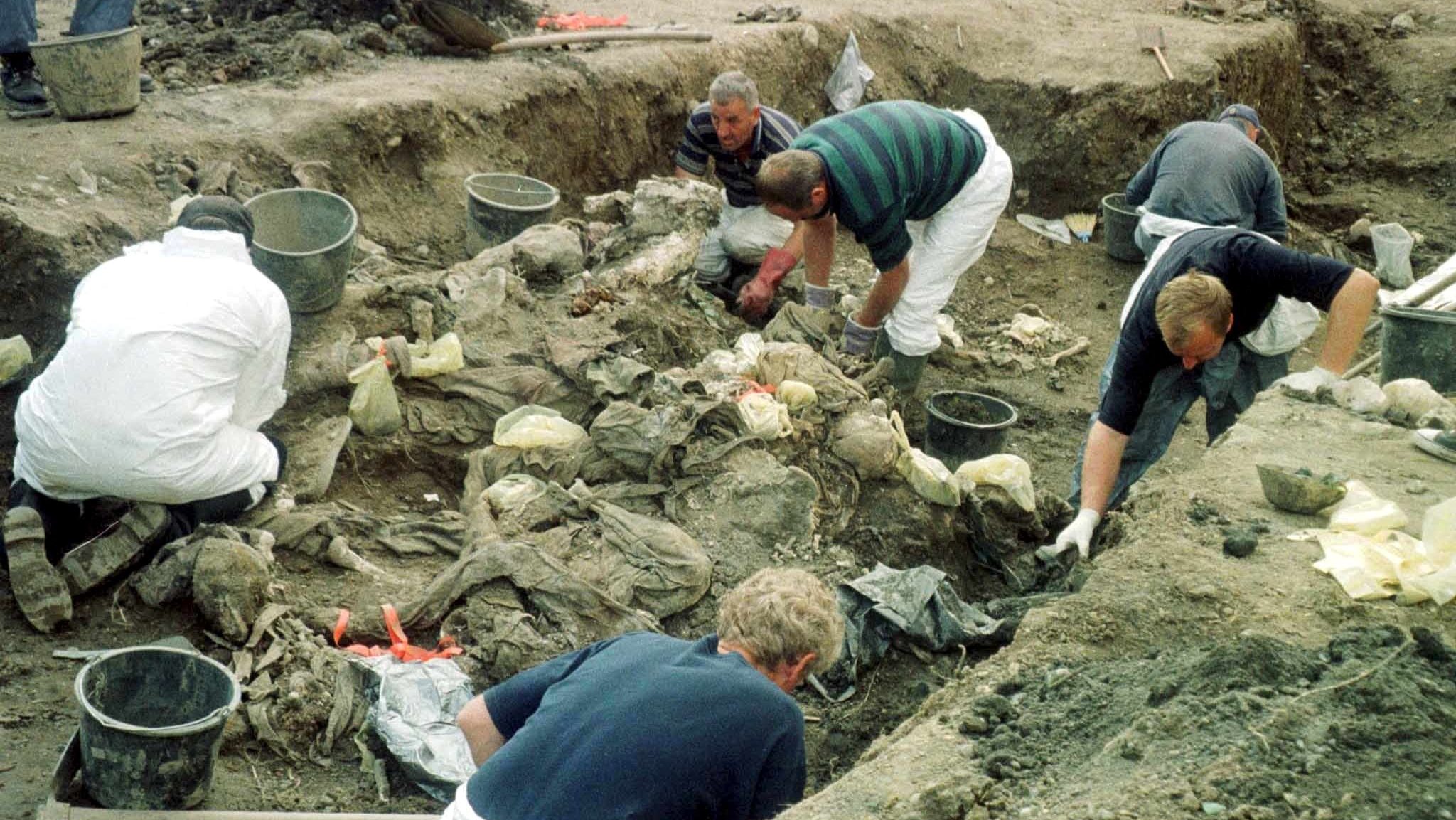This post is also available in: Bosnian
On the night of July 24, 1992, prisoners who were being held in a room at the Keraterm detention camp near Prijedor started to hallucinate and behave strangely.
“We started singing, and later on we started to fight each other,” recalled one of them, who only wanted be identified by the initials M.N.
M.N. believes that “some nerve poison was thrown into the room that night” – the prelude to a massacre.
Outside the room, the guards were preparing to kill.
“They set up a weapon in the yard and shot through the door at us. More of us died from the poison rather than the bullets. My two uncles died from the poison, not from the bullets, and everywhere there were my neighbours and friends who were wounded,” said M.N.
The use of poison gas was prohibited by an international convention on the treatment of civilians and prisoners of war; a protocol inspired by the carnage wreaked by chemical weapons during World War I – but witnesses have reported dozens of examples of its use during the Bosnian war of 1992-95.
In over 800 war crimes cases heard by the Hague Tribunal and courts in the former Yugoslavia, the use of poison gas and other chemical weapons has only been mentioned occasionally, most often as one of the methods of abuse in detention camps.
Bosnia’s State Prosecutor’s Office told BIRN that currently there are no investigations related to the use of poisons or chemicals in the war.
But such poisons have proved deadly, according to eyewitness accounts, and medical experts believe that they can also cause health problems or mental illnesses for years afterwards.
‘We started to choke’
Tear gas and smoke bombs were thrown into a student dormitory in Bileca where Bosniak prisoners of war were imprisoned in 1992, according to survivors’ statements.
“We didn’t know what it was… When we started to choke, we realised that it was poison,” one of them, Zeljko Bajramovic, recalled.
The Hague Tribunal verdict in the case of former Bosnian Serb police official Mico Stanisic and Stojan Zupljanin – who were sentenced to a total of 44 years in prison – states that canisters of gas were thrown into the corridors and three of the rooms. One witness awoke when he heard a hissing noise and someone shouted out: “Poison.”
“The gas was causing everyone to gasp, choke, vomit, and have severely irritated eyes. The next day, a detainee named Sajto Bajramovic was urinating blood and having fits,” the tribunal’s judgment said.
The same verdict states that Serb guards threw two poison gas canisters into a basement in Podlugovi, where Bosniak and Croat civilians were being imprisoned, causing serious mental and physical suffering to the detainees. Some became sick and one died.
“ witness ST-004 stated in his testimony that he felt like his throat was burning. The detainees managed to break through the door and escape from the basement,” the judgment said.
Some witnesses testified at trials in The Hague and in Bosnia and Herzegovina that Serb forces poured chemicals on the bodies of the people who were killed at Koricanske Stijene in 1992 in an attempt to conceal the crime.
At the trial in Sarajevo of former prison warden Branko Vlaco, who was sentenced to 15 years in jail for crimes against humanity for abusing non-Serb prisoners at detention camps in 1992, one witness said that tear gas was thrown into a prisoner’s room in the Bunker detention facility in Vogosca, where he was held in the summer 1992.
“Your eyes water, you sneeze, you cry,” witness Armin Balesic recalled.
A systematic plan?
There are differing views on whether the use of poison gases by Serb forces during the Bosnian conflict was part of a wider plan, or was carried out by rogue elements.
Psychologist Senadin Fadilpasic believes that using the poisons was part of a wider plan to destroy the Bosniak population.
“Obviously, there was a systematic plan and the goal was destruction, and there was a strategy to deal with prisoners in that way in order to achieve this goal,” said Fadilpasic.
However sociologist Srdjan Puhalo believes that only “psychopaths” used such chemical weapons, and that it was not “systemic and planned use”.
“It seems to me like some psychopaths who have come across that ‘something’ and then, ‘Let’s have fun – we now have tear gas and let’s see what happens if we release it,’” Puhalo said.
“These people are probably the same ones who killed, beat and raped,” he suggested.
Former detainee Samir Pojskic agrees that those who used poison gas were the most brutal of the wartime prison camp guards.
“It’s about pre-war human trash, most of these guards had some kind of frustrations in life,” said Pojskic.
“I call it sadism, because the methods they used are beyond even the worst human urges. So it’s not surprising to me that they used any means in order to humiliate the prisoners more and to devalue the inmates as human beings, and then destroy them,” he added.
However, psychologist Ivanka Jakovac said she believes that some fighters only used poison gas because they were ordered to do so.
“If they didn’t execute those orders, they would have been shot or punished. And the commanders, these are people who have some features of mental illness in themselves,” Jakovac argued.
Permanent consequences
Sudbin Music, a former detainee at the Omarska camp near Prijedor, insisted that the use of toxic gas was “just another in a series of tortures” employed by the guards.
Doctors say that many former inmates still have chronic health problems due to exposure to chemical poisons, as well as suffering the psychological consequences.
“Every suffering, trauma and fear leaves long-lasting consequences,” said Jakovac.
Neuropsychiatrist Abdulah Kucukalic said that the consequences for former inmates’ health are dependent on the type of poison that was used – nerve poisons affect the brain, while others affect the blood, liver, heart or other organs.
“When it comes to nerve toxins that affect the brain and change behaviour, it certainly results in not only temporary but also permanent consequences for one’s mental health, and often causes death,” Kucukalic explained.
He said that victims can suffer enduring hallucinations or vision and perception disorders.
Twenty-two years after the end of the war, former detainees are urging that a quality study be carried out on the impact on the health of people exposed to poisons and other chemicals during the war, and for prosecutors to open investigations.


